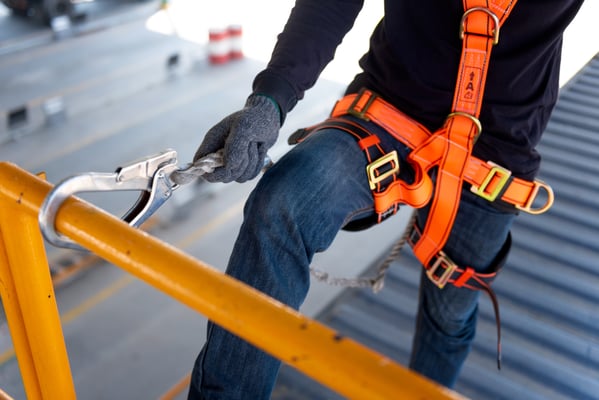Accidents have a significant impact on construction projects and contractors cannot afford to ignore risk factors. While minor accidents may only cause minor injuries and some disruption, a serious accident can spell the end of a project or company. The human consequences of accidents cannot be quantified in monetary terms. However, many expenses can quickly add up to thousands of dollars: medical services, litigation, property and equipment damage, property damage, penalties for missing deadlines, and even lawsuits.
In many construction projects, safety procedures are seen as an unavoidable expense or even a waste of time. When contractors invest in safety equipment and an activity is completed without incident, it is possible to reach this wrong conclusion. However, the cost of doing nothing is much higher than the cost of prevention, and this has been proven by numerous studies and industrial organizations.
Improve safety at your project sites with professional construction management services.
Accidents are typically associated with costs such as workers' compensation, medical expenses and legal services. However, construction accidents also incur indirect costs, such as hiring replacement personnel and implementing corrective measures. In high-risk industries like construction, indirect costs can be several times higher than direct costs.
Comparing Construction Safety Costs to Accident Costs

Accident prevention involves expenses such as personal protective equipment (PPE), and many activities could in fact be completed more quickly with fewer safety protocols. However, the decision to ignore security is neither ethical nor business smart. Workers' lives are put at risk even when no accidents occur, and the corporate image can be seriously damaged. Furthermore, when accidents happen, facing their consequences can be much more expensive than avoiding them.
According to OSHA, American companies pay more than a billion dollars a week in workers' compensation for disabling, non-fatal injuries. Preventing these accidents protects workers' quality of life, while also providing big savings to their employers. When the total impact of workplace injuries and deaths is considered, they cost the US economy approximately $151 billion per year.
The human impact of accidents is also significant and exceeds any financial losses: in 2018 alone, the US Bureau of Labor Statistics reported 2.8 million occupational injuries and illnesses and 5,147 deaths.

Many organizations have compared the costs of prevention with the costs of accidents, and doing nothing is much more expensive in all cases. The US National Safety Council interviewed financial managers and 60% responded that every dollar invested in prevention saves 2 dollars in the consequences of accidents. The European Commission reached a similar conclusion, estimating that the cost-benefit ratio of accident prevention is up to 2.18 – every euro invested in safety yields up to 2.18 euros. Finally, a UK study found that companies save up to £3 for every £1 invested in accident prevention.
The results of several studies point to the same conclusion: doing nothing about construction accidents is 200% to 300% more expensive than investing in prevention measures. In the case of construction, as it is an outdoor industry, the weather is also a risk factor that cannot be ignored: according to the National Oceanic and Atmospheric Administration (NOAA), a US$200 million project loses US$250,000 in one single day of weather-related problems. delays.
The National Safety Council has estimated that each injury or illness avoided saves the employer $37,000 and each fatality avoided saves $1,390,000. Protecting workers is an ethical responsibility of companies, and they also achieve great savings by doing so. According to the International Labor Organization, the impact of workplace accidents and health problems is equivalent to 4% of global GDP.
Can technology improve construction safety?

Contech or construction technology is a promising field that could evolve into a multi-billion dollar industry before 2030. Contech can improve many aspects of the construction industry, and this includes accident prevention.
- For example, wearable technology can be used to track individual workers across project sites at all times. When they enter a dangerous area, such as the turning radius of an operating crane, they can immediately receive an audiovisual notification.
- Construction managers can also be notified automatically and can give the correct instructions to avoid another risky situation.
Wearable technology can also be used to enforce social distancing measures during health emergencies like the current COVID-19 pandemic. For example, the devices used can detect when workers are not maintaining a safe distance and can be notified immediately.
Technology can also be used to collect site data more effectively with digital formats, and this includes information about workplace hazards. On the other hand, when inspections are carried out using printed forms, the information takes longer to reach decision makers.
Construction accidents can be very costly and have a human impact that cannot be calculated. However, prevention is much less costly than assuming the consequences, and emerging technologies can help security managers do their jobs more efficiently.

